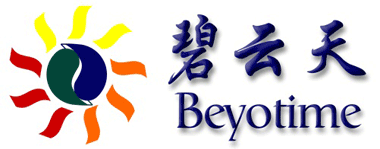 |
|
|
||||||||||||||||||||||||||||||||||||||||||||||||||||||||||||||
|
|||||||||
产品简介
产品简介:
| 产品编号 | 产品名称 | 产品包装 | 产品价格 |
| S1006 | BCECF AM (pH荧光探针) | 50微升 | 430.00元 |
BCECF AM,即2',7'-bis-(2-carboxyethyl)-5-(and-6)-carboxyfluorescein,acetoxymethyl
ester,是最常用的检测细胞内pH的荧光探针。
本BCECF AM(pH荧光探针)是配制于无水DMSO(anhydrous DMSO)中的储存液,浓度为5mM。
BCECF AM是一种可以穿透细胞膜的荧光染料。BCECF AM没有荧光,进入细胞后可以被细胞内的酯酶
剪切形成BCECF,从而被滞留在细胞内。BCECF在适当的pH值情况下可以被激发形成绿色荧光。最大激发波长和发射波长因pH的不同而有所不同,最大激发波长大致在503nm左右,最大发射波长大致在520nm左右,实际检测时推荐使用的激发波长为488nm,发射波长为535nm。BCECF在不同pH条件下的发射光谱参考下图。

BCECF AM不仅被广泛用于哺乳动物细胞的研究,也有报道用于动物组织、植物细胞、细菌和酵母等
的细胞内pH水平检测。在有细胞内pH变化的细胞毒性、细胞凋亡、细胞粘附、药物抵抗、细胞趋化等过程中BCECF AM被广泛应用。
用于细胞内pH检测时,常用的BCECF AM的浓度为1-10μM。
包装清单:
产品编号 |
产品名称 |
包装 |
S1006 |
BCECF AM(pH荧光探针, 5mM) |
50微升 |
— |
说明书 |
1份 |
保存条件:
-20℃避光保存,一年有效。
注意事项:
BCECF AM(pH荧光探针, 5mM)可能对人体有害,请注意适当防护。
本BCECF AM在4℃、冰浴等较低温度情况下会凝固而粘在离心管管底、管壁或管盖内,可以20-25℃
水浴温育片刻至全部融解后使用。
荧光染料均存在淬灭问题,请尽量注意避光,以减缓荧光淬灭。
为了您的安全和健康,请穿实验服并戴一次性手套操作。
使用说明
使用说明:
产品图片

相关产品
相关论文
使用本产品的文献:
1. Li XY, He JL, Liu HT, Li WM, Yu C.
Tetramethylpyrazine suppresses interleukin-8 expression in LPS-stimulated human
umbilical vein endothelial cell by blocking ERK, p38 and nulear factor-kappaB signaling
pathways.
J Ethnopharmacol. 2009 Aug 17;125(1):83-9. Epub 2009 Jun 18.
2. Chen M, Zou X, Luo H, Cao J, Zhang X, Zhang B, Liu W.
Effects and mechanisms of proton pump inhibitors as a novel chemosensitizer on human
gastric adenocarcinoma (SGC7901) cells.
Cell Biol Int. 2009 Sep;33(9):1008-19.
3. Liu HT, Li WM, Huang P, Chen WJ, Liu QS, Bai XF, Yu C, Du YG.
Chitosan oligosaccharides inhibit TNF-a-induced VCAM-1 and ICAM-1 expression in human
umbilical vein endothelial cells by blocking p38 and ERK1/2 signaling pathways
Carbohydrate Polymers.2010.
4. Xu H, Gao XG, Song J, Wang FG, Xu Z, Lu D, Xu XX, XiaYF, Dai Y.
Peoniflorin prevents the adhesion between inflammatory endothelial cells and leukocytes
through inhibiting the activation of MAPKs and NF‐κB.
Drug Development Research,2010Aug,71(5),275-284.
5. Liu HT, He JL, Li WM, Yang Z, Wang YX, Yin J, Du YG, Yu C.
Geniposide inhibits interleukin-6 and interleukin-8 production in
lipopolysaccharide-inducedhuman umbilical vein endothelial cells by blocking p38 and
ERK1/2 signaling pathways.
Inflamm Res. 2010 Jun;59(6):451-61.
6. Liu HT, Huang P, Ma P, Liu QS, Yu C, Du YG.
Chitosan oligosaccharides suppress LPS-induced IL-8 expression in human umbilical
veinendothelial cells through blockade of p38 and Akt protein kinases.
Acta Pharmacol Sin. 2011 Apr;32(4):478-86.
7. Chen L, Zhao Q, Wang XL, You R, Zhang YH, Ji H, Lai YS.
ZLJ-6, a novel COX/5-LOX inhibitor, attenuates TNF-α-induced endothelial E-selectin,
ICAM-1 and VCAM-1 expression and monocyte-endothelial interactions via a
COX/5-LOX-independent mechanism.
Vascul Pharmacol. 2011 Nov-Dec;55(5-6):135-42.
8. Liao Y, Wang J, Huang QS, Fang C, Kiyama R, Shen H, Dong S.
Evaluation of cellular response to perfluorooctane sulfonate in human umbilical vein
endothelial cells.
Toxicol In Vitro. 2012 Apr;26(3):421-8.
9. Fu R, Yan T, Wang Q, Guo Q, Yao H, Wu X, Li Y.
Suppression of endothelial cell adhesion by XJP-1, a new phenolic compound derived
frombanana peel.
Vascul Pharmacol. 2012 May 17.
10.Yang L, Zhu L, Xu Y, Zhang H, Ye W, Mao J, Chen L, Wang L.
Uncoupling of K+ and Cl- transport across the cell membrane in the process of regulatory
volume decrease.
Biochem Pharmacol. 2012 Aug 1;84(3):292-302.
11.Chen M, Huang SL, Zhang XQ, Zhang B, Zhu H, Yang VW, Zou XP.
Reversal effects of pantoprazole on multidrug resistance in human gastric
adenocarcinoma cellsby down-regulating the V-ATPases/mTOR/HIF-1α/P-gp and MRP1
signaling pathway in vitro and in vivo.
J Cell Biochem. 2012 Jul;113(7):2474-87.
12.Xu H, Song J, Gao X, Xu Z, Xu X, Xia Y, Dai Y.
Paeoniflorin attenuates lipopolysaccharide-induced permeability of endothelial cells:
involvements of F-actinexpression and phosphorylations of PI3K/Akt and PKC.
Inflammation. 2013 Feb;36(1):216-25. doi: 10.1007/s10753-012-9537-3.
13.Chen T, Guo ZP, Wang L, Qin S, Cao N, Li MM, Jia RZ, Wang TT.
Paeoniflorin suppresses vascular damage and the expression of E-selectin and ICAM-1 in
a mouse model ofcutaneous Arthus reaction.
Exp Dermatol. 2013 Jul;22(7):453-7. doi: 10.1111/exd.12174.
14.Liu P, Wang YY, Qi X, Gu Q, Geng M, Li J.
Undecylprodigiosin induced apoptosis in p388 cancer cells is associated with its binding
to ribosome.
PLoS One. 2013 Jun 14;8(6):e65381. doi: 10.1371/journal.pone.0065381. Print 2013.
15.Chen T, Guo ZP, Li L, Li MM, Wang TT, Jia RZ, Cao N, Li JY.
TWEAK enhances E-selectin and ICAM-1 expression, and may contribute to the development
of cutaneousvasculitis.
PLoS One. 2013;8(2):e56830. doi: 10.1371/journal.pone.0056830. Epub 2013 Feb 15.
16.Han F, Xu Y, Jiang D, Qin Y, Chen H.
A BODIPY-derived fluorescent probe for cellular pH measurements.
Anal Biochem. 2013 Apr 15;435(2):106-13. doi: 10.1016/j.ab.2013.01.003.
Epub 2013 Jan 16.
17.Liao Y, Dong S, Kiyama R, Cai P, Liu L, Shen H.
Flos lonicerae extracts and chlorogenic acid protect human umbilical vein endothelial
cells from the toxic damageof perfluorooctane sulphonate.
Inflammation. 2013 Jun;36(3):767-79. doi: 10.1007/s10753-013-9603-5.
18.Yin J, Wu N, Zeng F, Cheng C, Kang K, Yang H.
Paeonol induces apoptosis in human ovarian cancer cells.
Acta Histochem. 2013 Jun 12. pii: S0065-1281(13)00076-7.
19.Hu M, Yang Y, Meng C, Pan Z, Jiao X.
Responses of macrophages against Salmonella infection compared with phagocytosis.
In Vitro Cell Dev Biol Anim. 2013 Dec;49(10):778-84. doi: 10.1007/s11626-013-9672-
7. Epub 2013 Aug 16.
20.Chen B, Wang W, Shen T, Qi R.
Thioredoxin1 downregulates oxidized low-density lipoprotein-induced adhesion molecule
expression via Smad3 protein.
PLoS One. 2013 Sep 23;8(9):e76226. doi: 10.1371/journal.pone.0076226. eCollection
2013.
21.Xu SY, Hu YF, Li WP, Wu YM, Ji Z, Wang SN, Li K, Pan SY.
Intermittent hypothermia is neuroprotective in an in vitro model of ischemic stroke.
Int J Biol Sci. 2014 Jul 29;10(8):873-81. doi: 10.7150/ijbs.8868. eCollection 2014.
苏ICP备06009238号 |

